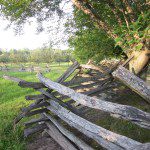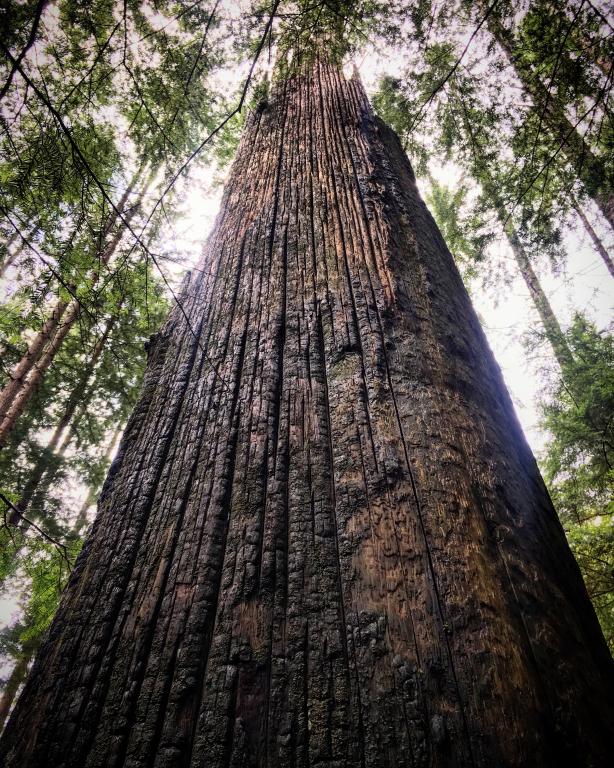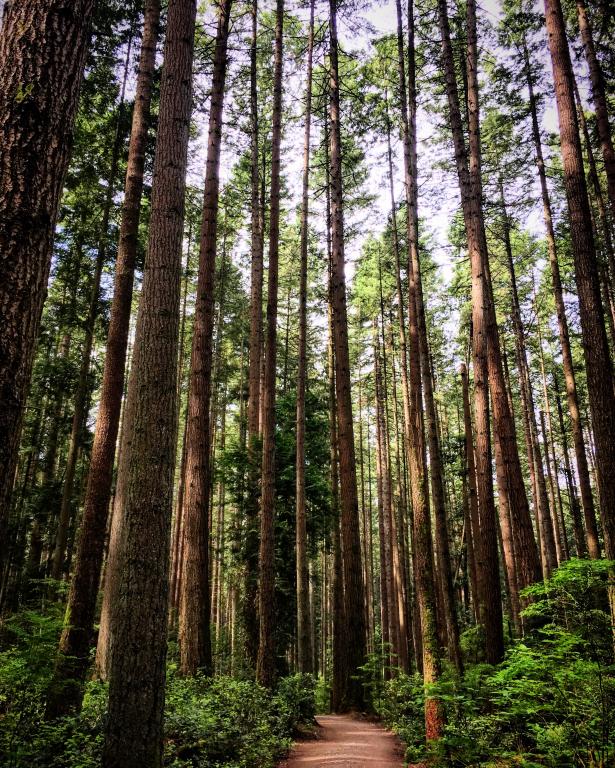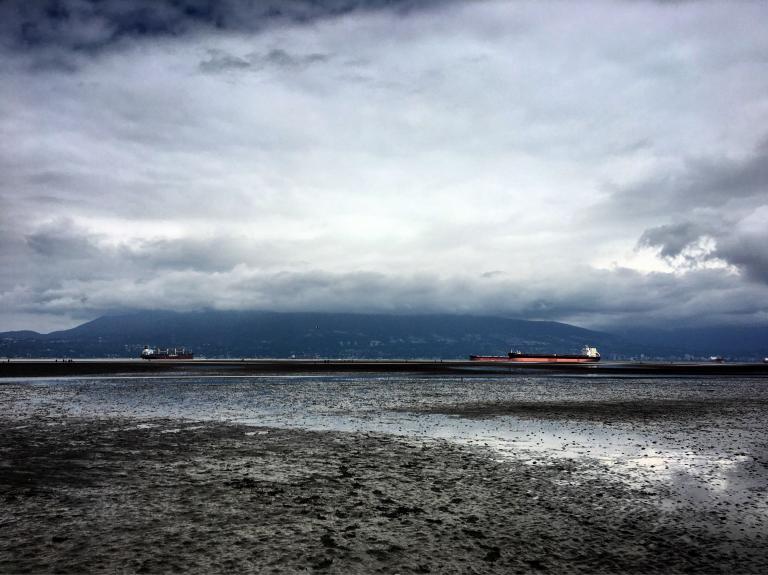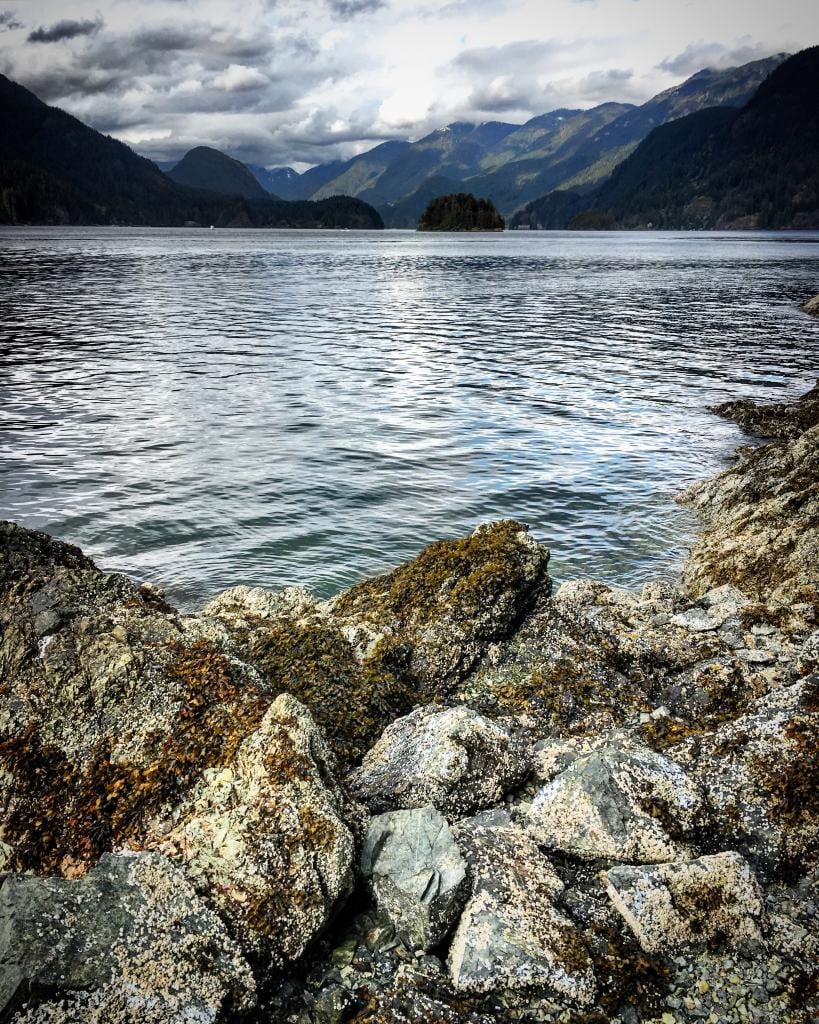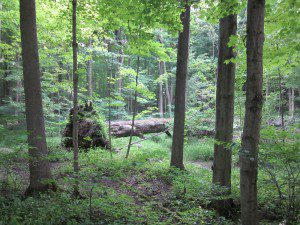
The Restoration of a Holyscape
It must be remembered however, that forests are not static objects but dynamic and diverse ecosystems. As this picture shows, taken in 1907, there is no substantial understory. Once the towering trees die, there will be nothing to replace them. After the Beans left as caretakers, the grove continued to be managed as a sacred place, but more like a park than an ecosystem; leaves, branches and dead trees were raked and cleared from the understory thus depriving the soil of precious nutrients. In addition, well intending pilgrims trampled and compacted the fragile soil dooming any seedlings before they could grow past ankle height. It is perhaps ironic then, that by the early 1990s a sacred center of what Mormons call “The Restoration” was in desperate need of ecological restoration.
In 1820 Joseph Smith Jr. would have been dwarfed by massive beech, maple, oak and hickory trees surrounded by an abundance of understory wildflowers, herbs, forbes, ferns, mushrooms, vines and shrubs. He would have spotted deer, abundant birds, squirrels while he worked; rested on fallen logs housing mosses, fungi, ants, beetles and salamanders. But by the 1990s the forest was practically sterile and in desperate need of restoration. This restoration began in 1996 when the Mormon Church hired Robert Parrot a local logger and arborist to haul out some timber from an adjacent property that would be used in the construction of the replica log homes on the newly renovated Joseph Smith farm site. Parrot cut the logs with precision, taking great care not to expose large stumps or leave wide gaps. He extracted the logs carefully, not causing damage to soil or other vegetation. The church was so impressed by Parrot that although not Mormon himself, he was hired on as a consultant. Gordon Hinckley, then President of the LDS Church asked Parrot to restore the grove to “health, vitality and biological balance.” Parrot did so with remarkable results.
Parrot began by creating a system of more abundant, but narrower trails; retiring a u-shaped trail that had been established for decades. There was also a parking lot located near the grove where one could hear tour buses idling, not ideal for a spiritual experience. Parrot decommissioned the lot and replanted the area, moving the lot to the east. He left fallen trees where they were and opened a few gaps in the canopy allowing thousands of saplings to grow up through the newly created openings. However, the most important thing Parrot did was nothing. He stopped members from raking and cleaning the understory and allowed the much needed leaves, branches and logs to accumulate on the soil. Of his method Parrot told the Mormon Times jokingly: “It [took] an amazing amount of work to make it look as if I didn’t do anything.”
In just over 15 years under Robert’s care, the Sacred Grove so beloved by Mormons as a center of spiritual rejuvenation is regaining much of its former ecological diversity and health. Since 1996 the church has also acquired some of the surrounding properties bringing the total acreage of the grove to 150. With over 150,000 visitors each year, the grove is now large enough to accommodate its primary management objective: the Joseph Smith experience. The desired ecological state of the grove is now a managed old growth forest that seeks to return the grove to as close to its 1820 state as possible while simultaneously allowing visitors to dwell within the mystical space of Mormonism’s founder.
Brian Welton, a forester working for the LDS Church has also established permanent plots in the grove to monitor its health and ecological succession over time. He has also taken great care to ensure that this old growth sacred forest is safe for visitors by monitoring the grove for hazardous trees damaged in storms and broken or decaying limbs that may be hanging over paths or benches.
And yet, there is not just one Grove within Mormon sacred geography. Smith recorded numerous encounters with the divine on many separate occasions. The forest located on the border of Manchester and Palmyra is the most well-known; yet the Church Historic Sites department also manages significant forests in Sharon, Vermont where Joseph Smith Jr. was born; the ‘Hill Cumorah’ where Joseph encountered the angel Moroni and his buried Book of Mormon; and what is today Oakland but was then Harmony, Pennsylvania, where Smith saw visions of John the Baptist and Peter, James and John. Each of these encounters evokes reverence among Mormon faithful and helps define the contours of Mormon sacred time and space. It is thus more appropriate to talk of the sacred groves of Mormonism, of which there are approximately 508 acres scattered throughout the United States.

